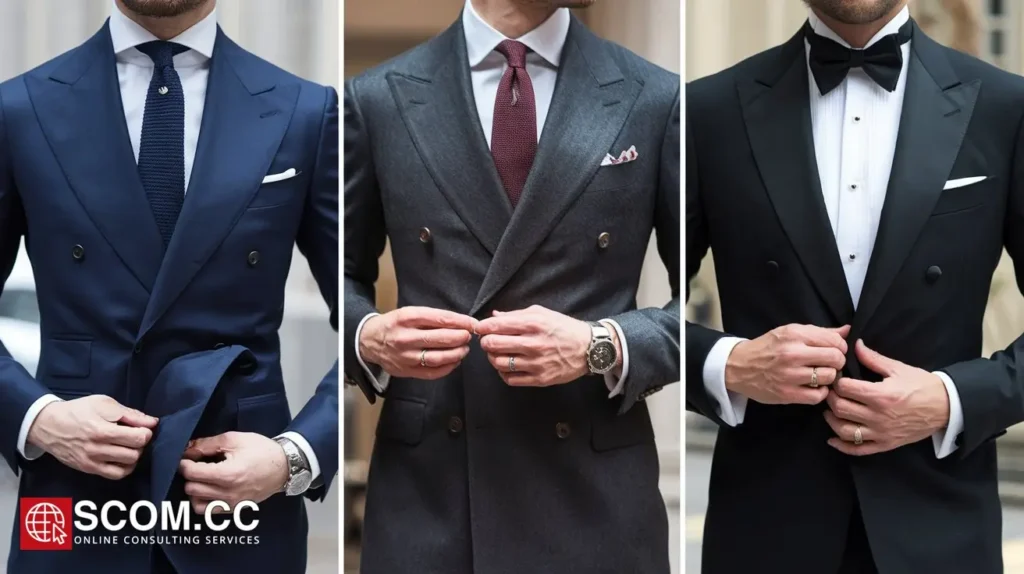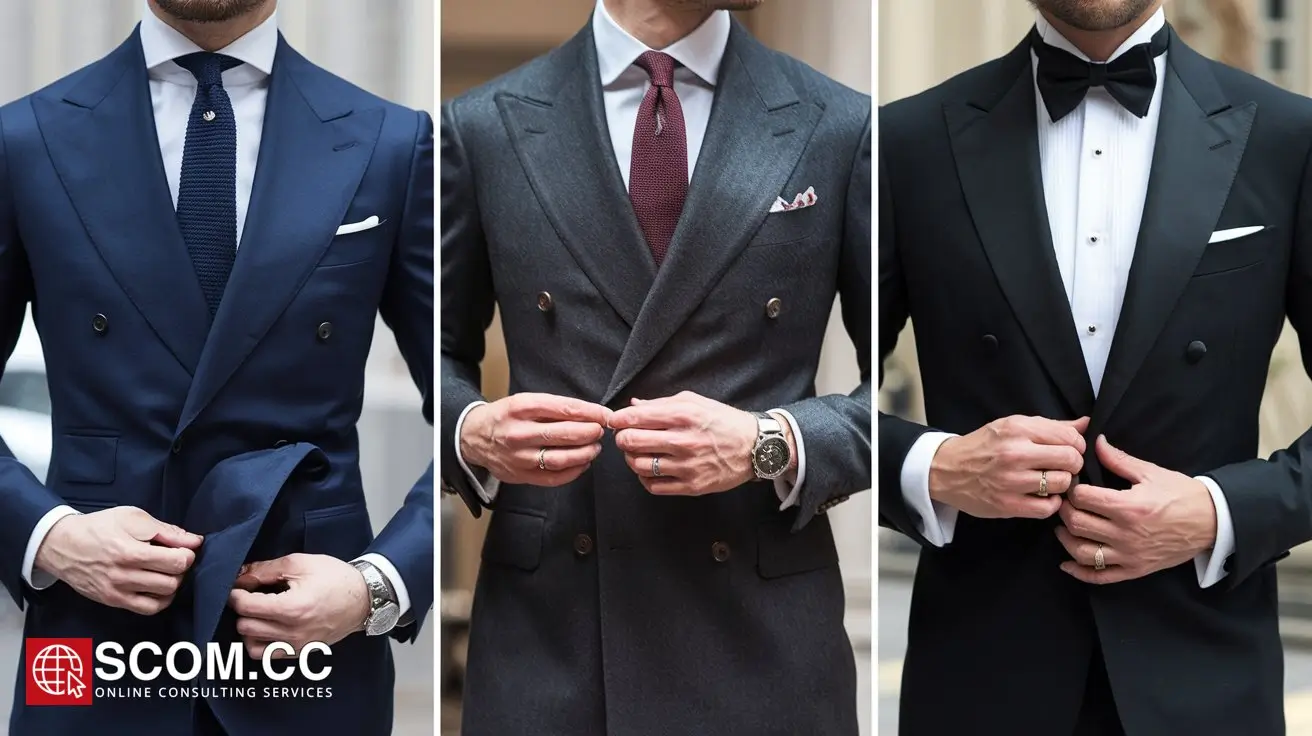Tips for Finding the Ideal Suit Jacket Length

- Tips for Finding the Ideal Suit Jacket Length
- Understand the Basic Suit Jacket Length Guidelines
- Consider Your Body Type and Height
- Assess the Suit Jacket Style
- Try On Different Jackets and Sizes
- Adapt for Different Occasions
-
FAQ
- 1. How do I determine the correct suit jacket length?
- 2. What if the jacket length is too long or too short?
- 3. How should the jacket fit in the shoulder area?
- 4. Can I wear a blazer with a shorter jacket length?
- 5. How does my body type affect jacket length?
- 6. Should the jacket length change with the season?
- 7. How often should I visit a tailor for jacket adjustments?
Tips for Finding the Ideal Suit Jacket Length
Choosing the perfect suit jacket length is crucial for achieving a polished and tailored appearance. The right jacket length not only enhances your overall look but also ensures comfort and appropriateness for various occasions. Here are some comprehensive tips for finding the ideal suit jacket length to help you look sharp and sophisticated.
Understand the Basic Suit Jacket Length Guidelines
The length of a suit jacket should be balanced to complement your body type and proportions. Here are the general guidelines to follow:
Covering the Seat
The most traditional rule is that the jacket should cover your seat (buttocks) entirely. This classic length ensures that the jacket provides adequate coverage and maintains a streamlined silhouette.
The bottom button of the jacket should ideally align with the top of your trouser pockets. This alignment helps in maintaining a balanced look and ensures that the jacket does not appear too short or too long.
Sleeve Visibility
The sleeves of the jacket should end just above the wrist bone, allowing for approximately half an inch of shirt cuff to be visible. This detail contributes to a well-fitted appearance and highlights the tailoring of your suit.
Consider Your Body Type and Height
Different body types and heights can influence the ideal jacket length. Here’s how to determine what works best for you:
Tall and Slim
For tall and slim individuals, a slightly longer jacket can help in balancing proportions and adding a touch of sophistication. Ensure that the jacket covers the seat and aligns with the trouser pockets for a well-proportioned look.
Shorter Frames
If you have a shorter frame, opt for a jacket that falls just at or slightly below the seat. Avoid overly long jackets, as they can make you appear shorter. A shorter jacket length that aligns with the trouser pockets can create a more flattering appearance.
Broad Shoulders
For those with broad shoulders, ensure that the jacket length complements the width of your shoulders without exaggerating it. A jacket that covers the seat and aligns with the trouser pockets will provide a balanced look.
Assess the Suit Jacket Style
Different suit styles can affect the ideal jacket length. Here’s how to match the jacket length with various styles:
Single-Breasted Jackets
For single-breasted jackets, adhere to the traditional length that covers the seat and aligns with the trouser pockets. This classic style is versatile and suitable for most body types.
Double-Breasted Jackets
Double-breasted jackets often require a slightly longer length to accommodate the additional layers of fabric. Ensure that the jacket still maintains coverage of the seat and aligns with the trouser pockets for a well-proportioned appearance.
Blazers
Blazers, which are typically less formal than suits, can vary in length depending on the intended look. A blazer that covers the seat and has a slightly shorter length than a suit jacket can be appropriate for casual or semi-formal settings.
Try On Different Jackets and Sizes
To find the ideal jacket length, trying on various jackets is essential. Here’s how to do it effectively:
Check the Fit
When trying on jackets, ensure that the length falls in line with the seat and trouser pockets. Check how the jacket fits when you move, sit, or raise your arms. The jacket should maintain its shape and not pull or bunch up.
Use a Mirror
Stand in front of a full-length mirror to assess the jacket’s length from different angles. Pay attention to how the jacket looks both standing and sitting. This will help you visualize the overall appearance and determine if any adjustments are needed.
Consult a Tailor
A professional tailor can offer valuable insights and adjustments to achieve the perfect jacket length. Tailoring can fine-tune the length and ensure that the jacket complements your body type and personal style.
Adapt for Different Occasions
The ideal jacket length may vary depending on the occasion. Here’s how to adapt:
Formal Events
For formal events, such as weddings or business meetings, adhere to the classic jacket length that covers the seat and aligns with the trouser pockets. This length provides a polished and sophisticated look suitable for formal settings.
Casual Wear
For more casual wear, such as social gatherings or less formal occasions, you can experiment with slightly shorter jacket lengths. Ensure that the jacket still maintains a well-fitted and balanced appearance, without compromising comfort.
Seasonal Considerations
In warmer seasons, you might opt for a slightly shorter jacket length to enhance comfort and breathability. In colder weather, a longer jacket length can provide additional warmth and coverage.
By following these tips and considering factors such as body type, jacket style, and occasion, you can find the ideal suit jacket length that enhances your overall look and provides a tailored fit. A well-chosen jacket length contributes to a polished appearance and ensures that you feel confident and comfortable in any setting.
Summary Table
| Aspect | Recommendation |
|---|---|
| Basic Length Guidelines | Cover the seat; bottom button aligns with trouser pockets; sleeves end above wrist bone. |
| Tall and Slim | Opt for a slightly longer jacket that covers the seat. |
| Shorter Frames | Choose a jacket that falls just at or slightly below the seat. |
| Broad Shoulders | Ensure the jacket length complements shoulder width without exaggeration. |
| Single-Breasted Jackets | Classic length covering the seat and aligning with trouser pockets. |
| Double-Breasted Jackets | Slightly longer length to accommodate additional layers. |
| Blazers | Slightly shorter length than a suit jacket for a more casual look. |
| Trying On Jackets | Ensure fit, check length in a mirror, and consider tailoring. |
| Consult a Tailor | For adjustments to achieve perfect length and fit. |
| Occasions | Formal: classic length; Casual: can experiment with slightly shorter lengths; Seasonal: adjust for comfort and warmth. |
FAQ
1. How do I determine the correct suit jacket length?
To determine the correct suit jacket length, ensure that the jacket covers your seat and aligns with the top of your trouser pockets. The sleeves should end just above your wrist bone, allowing for half an inch of shirt cuff to be visible.
2. What if the jacket length is too long or too short?
If the jacket length is too long or too short, consider visiting a tailor. Tailoring can adjust the length to fit your body proportions and ensure a well-balanced appearance.
3. How should the jacket fit in the shoulder area?
The shoulders of the jacket should align with your natural shoulder line. There should be no puckering or pulling, and the jacket should fit comfortably without being too tight or too loose.
4. Can I wear a blazer with a shorter jacket length?
Yes, blazers can have a slightly shorter jacket length compared to formal suits. This is suitable for casual or semi-formal settings and can offer a more relaxed appearance.
5. How does my body type affect jacket length?
Your body type influences the ideal jacket length. Taller individuals might prefer a slightly longer jacket, while shorter individuals should avoid overly long jackets. Broad shoulders require a balanced length, and slim figures can benefit from classic proportions.
6. Should the jacket length change with the season?
In warmer seasons, a slightly shorter jacket length can enhance comfort, while in colder seasons, a longer length provides additional warmth and coverage. Adjustments based on seasonal needs can improve both style and practicality.
7. How often should I visit a tailor for jacket adjustments?
Regular visits to a tailor are recommended if you notice changes in your body size or if you purchase new suits. Tailors can make necessary adjustments to ensure your jackets always fit well and maintain a sharp appearance.

To explore more about tailoring, visit our Blog of Tailoring. If you have any questions or need assistance, go to our contact page. Additionally, you can find more information about tailoring and consulting at this tailoring and consulting portal.

Leave a Reply